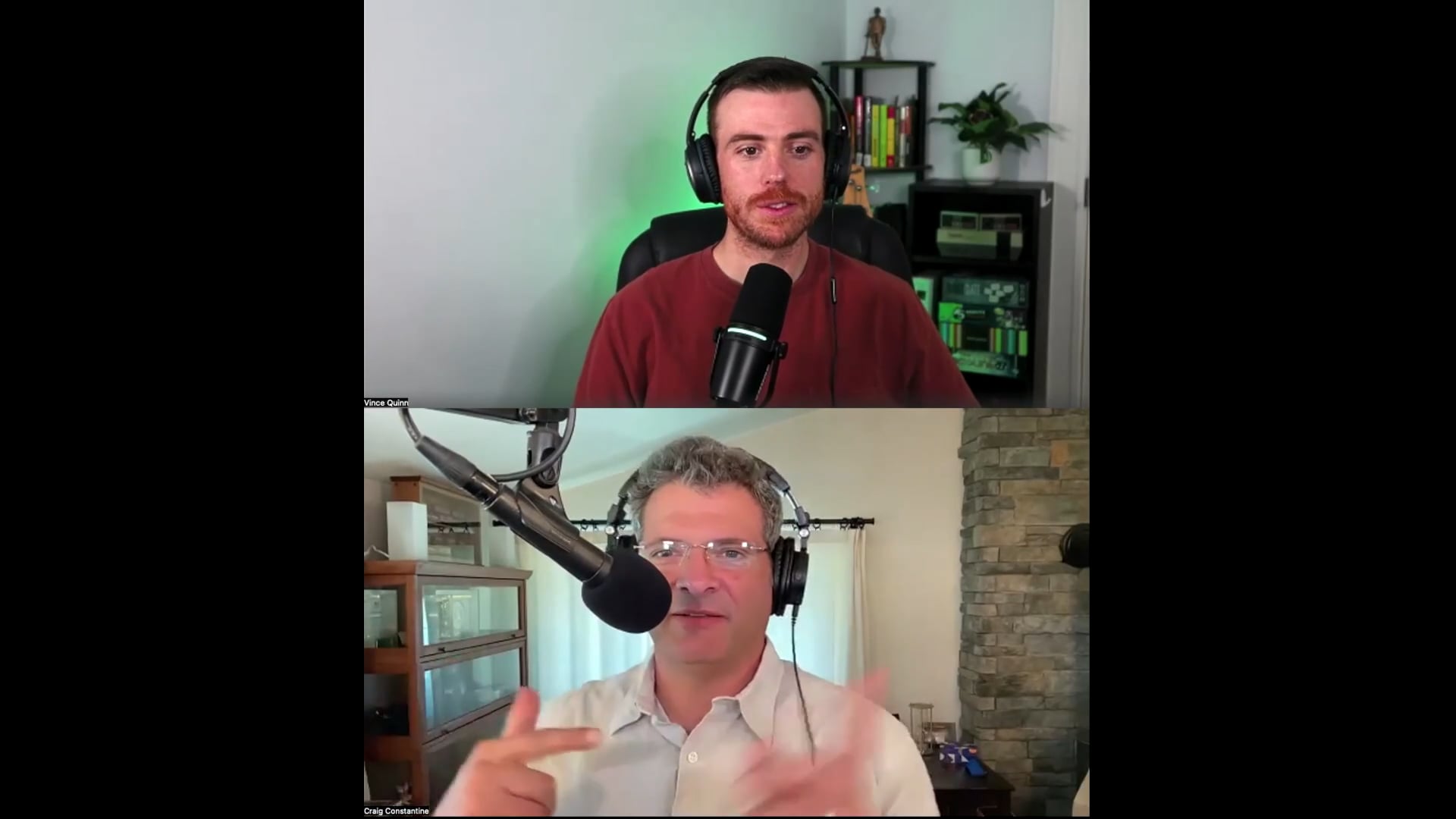How should you structure and use LinkedIn so it actually helps people find you, contact you, and move into the next step you want? (Want more posts/videos like this? Please let us know!)
Vince Quinn (from SBX Productions) and I had a short discussion (13 minutes) about what we’re doing to get the most out of our LinkedIn profiles.
The discussion examines how to make a LinkedIn profile function as an intentional channel rather than a set‑and‑forget page. It starts with auditing an outdated About section and fixing incorrect links, then selecting one primary link as the call to action, even using deep links when appropriate. Contact info is reordered to match likely visitors, and the built‑in 90‑day metrics are reviewed: profile views and post impressions lead to checking website analytics, where even a single click from a small number of views signals real intent and reframes LinkedIn’s value.
Craig and Vince contrast a basic profile with a premium setup that adds a prominent “Book an appointment” button deep‑linking to an intake form, and they frame LinkedIn as top‑of‑funnel for podcast work: post opinions, connect with relevant people, and route interest off‑platform. Practical networking tactics include accepting connection requests, immediately asking what prompted the reach‑out, and quickly qualifying sales pitches. They also highlight using LinkedIn search to find roles like podcast editor or producer, auditing past work before outreach, and keeping profiles current so referrals can verify details quickly, closing with a direct invitation to connect on LinkedIn.
Takeaways
Profile hygiene — Keep the About section and links current; outdated text and wrong URLs undermine first impressions.
Single primary link — Choose a homepage, show page, or business page intentionally, and use a deep link if it better serves the goal.
Contact info ordering — Re‑enter and arrange email and URLs so preferred channels are obvious in the contact modal.
Audience alignment — Surface links that match who finds you on LinkedIn, such as raising a podcast community link for likely visitors.
Activity dashboard context — Treat the 90‑day sliding window for profile views and post impressions as a directional signal.
Sanity check with site analytics — Compare LinkedIn views to website stats; a single click from 13 profile views indicates meaningful intent.
Premium CTA impact — A “Book an appointment” button that deep‑links to an intake form changes the action visitors take.
Clear top‑of‑funnel — Post opinions about podcasting, connect with relevant people, and route interest to an off‑platform form.
Messaging workflow — Accept the request, immediately ask what prompted the reach‑out, and quickly qualify sales pitches.
Referral readiness — Maintain a profile that helps third parties verify you before they send you clients.
Role search utility — Use LinkedIn search to find podcast editors or producers, audit their past shows, and reach out directly.
Platform purpose — Decide what LinkedIn is for (discovery, messaging, referrals) and maintain accordingly rather than set‑and‑forget.
Mindful maintenance — Revisit how your profile actually appears to others (including via screenshots) and adjust accordingly.
Direct invitation to connect — Close by encouraging people to reach out on LinkedIn to continue the conversation.
Not rocket science, but attention — Results come from simple, consistent attention rather than a one‑time setup.
ɕ
(Written with help from Chat-GPT)
